Sofia Cacciapaglia: Incanto
Every beginning is only a sequel, after all
Curated by Emma Kathleen Hepburn Ferrer
April 13, 2023 - May 20, 2023
Opening April 13, 2023, 6-8 pm
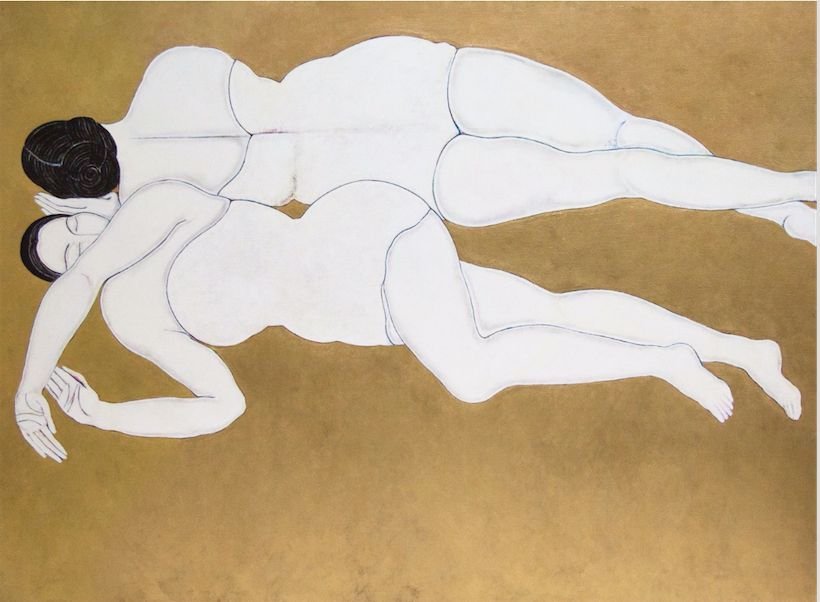
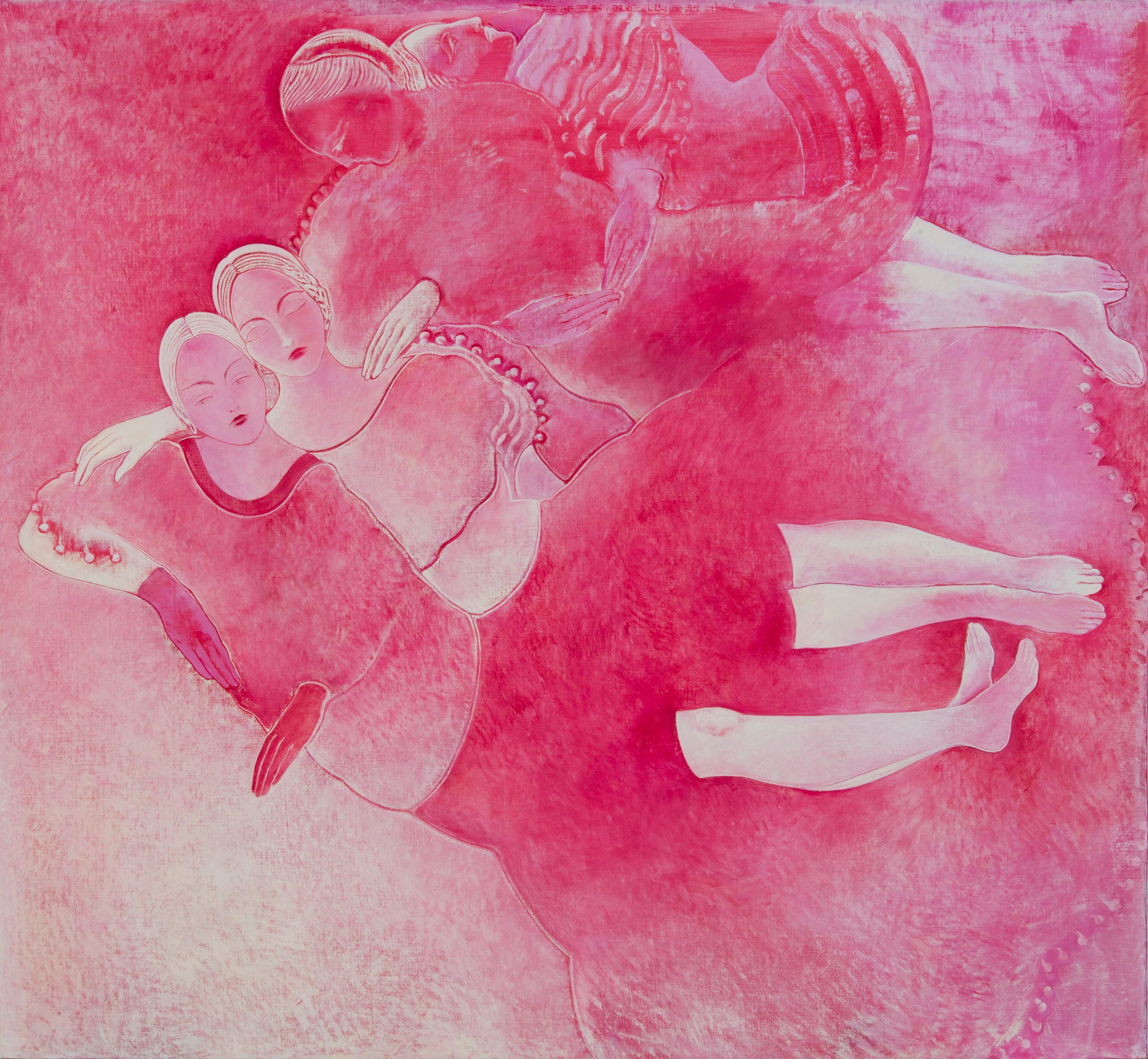

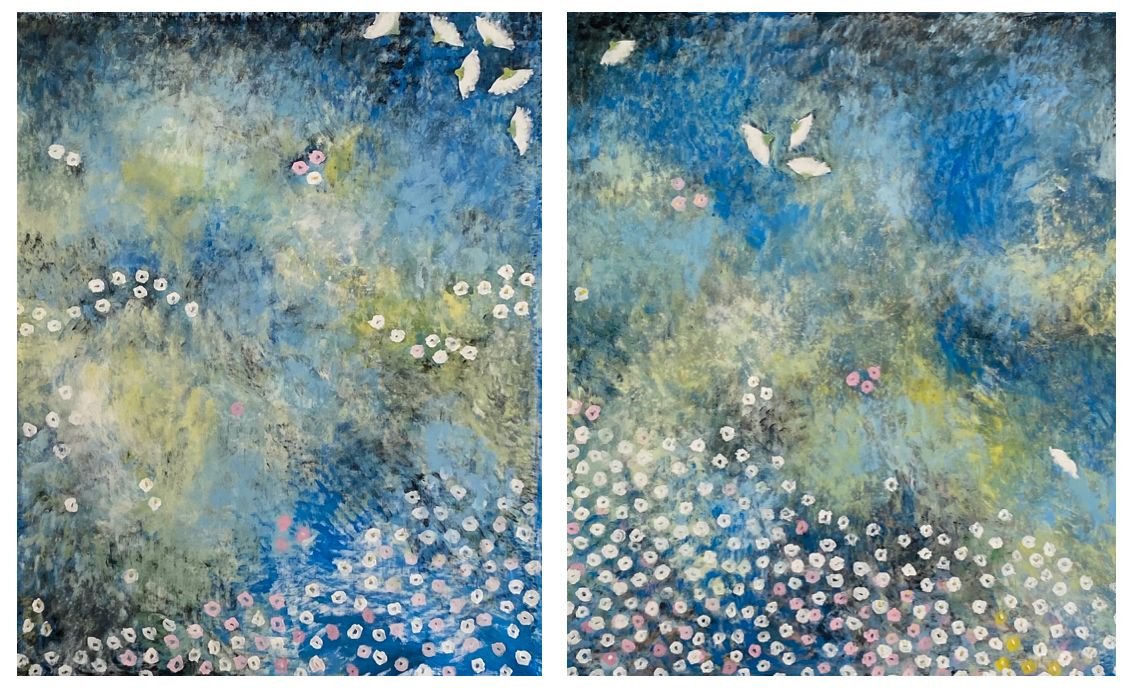
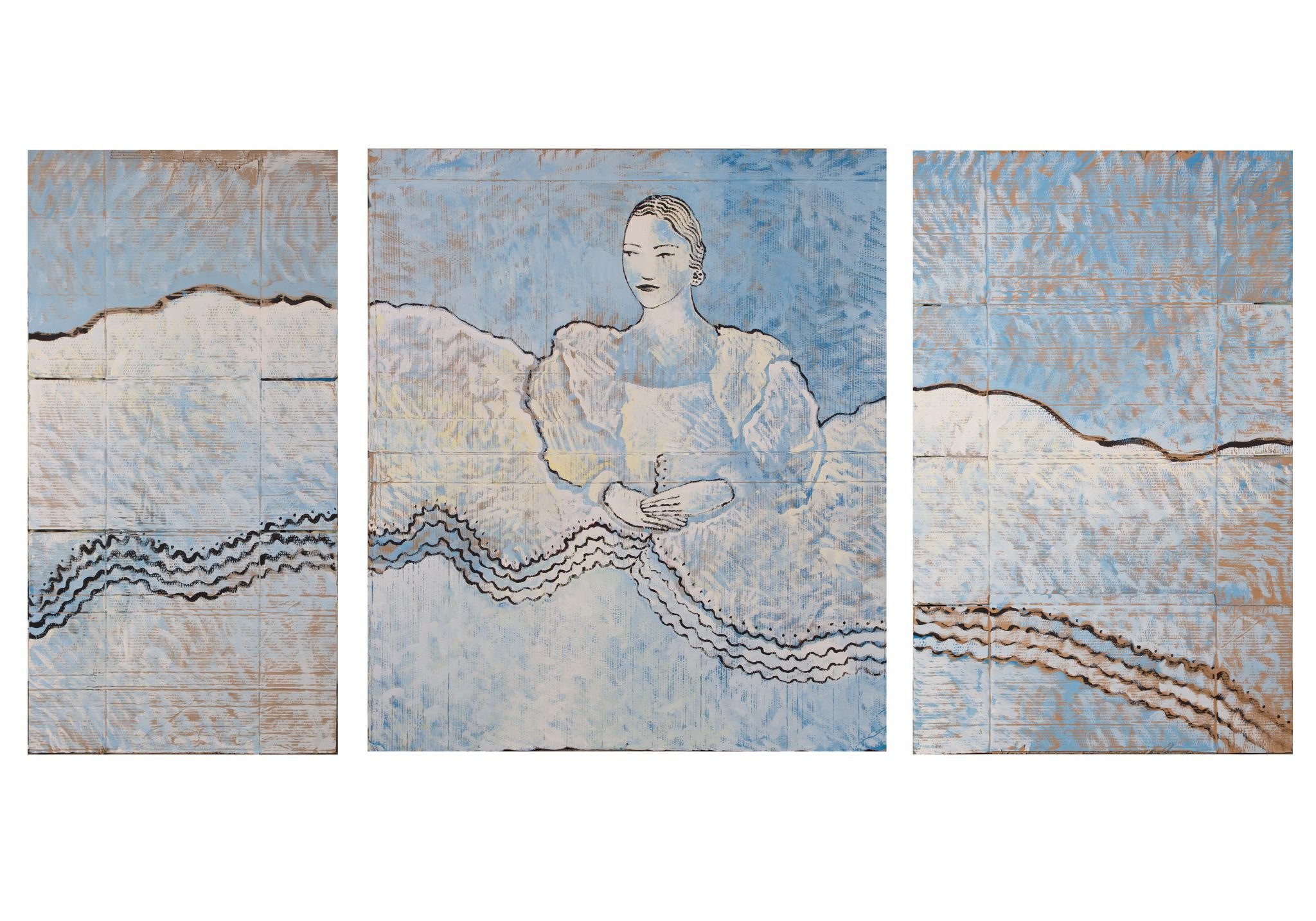
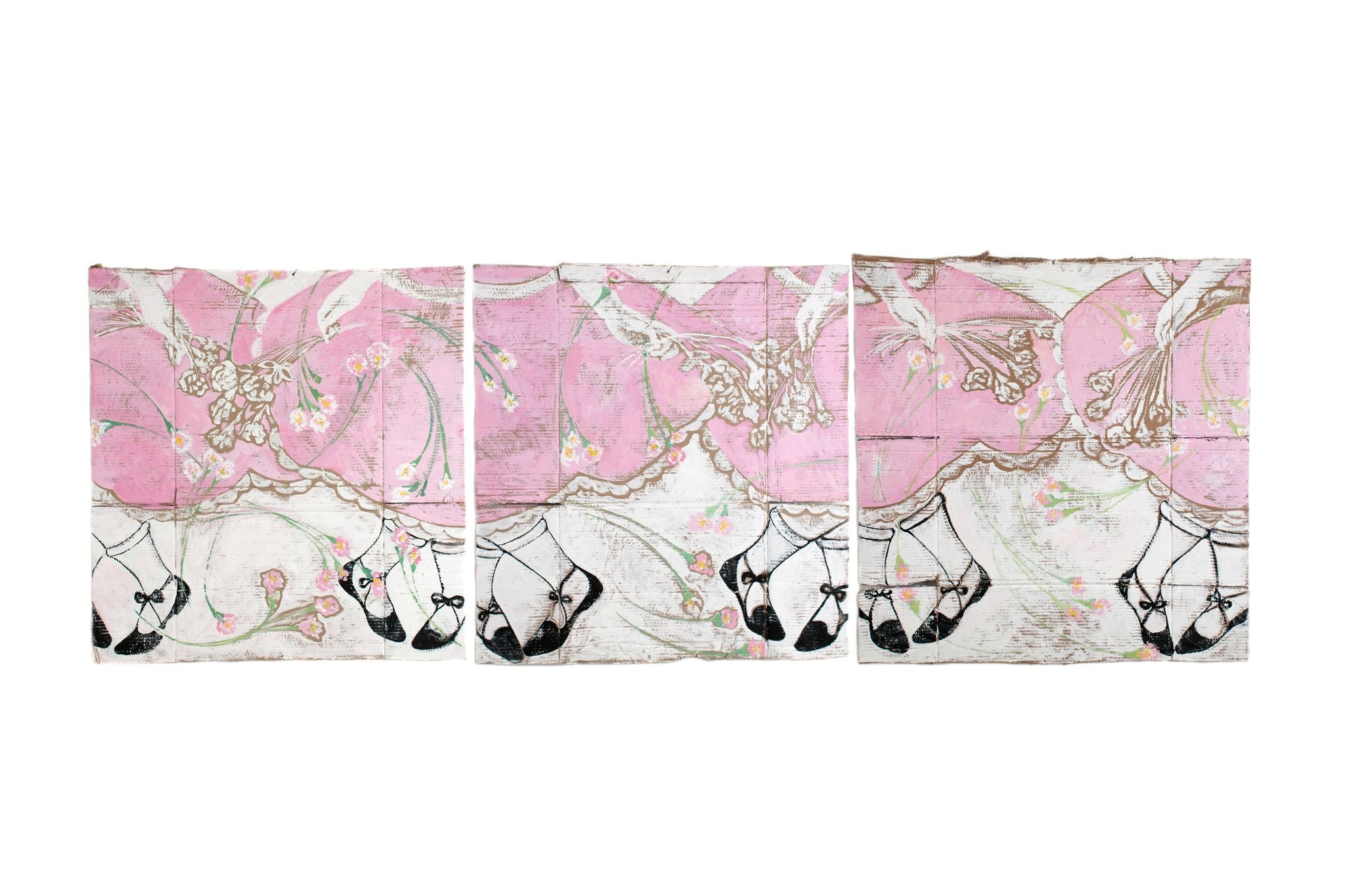
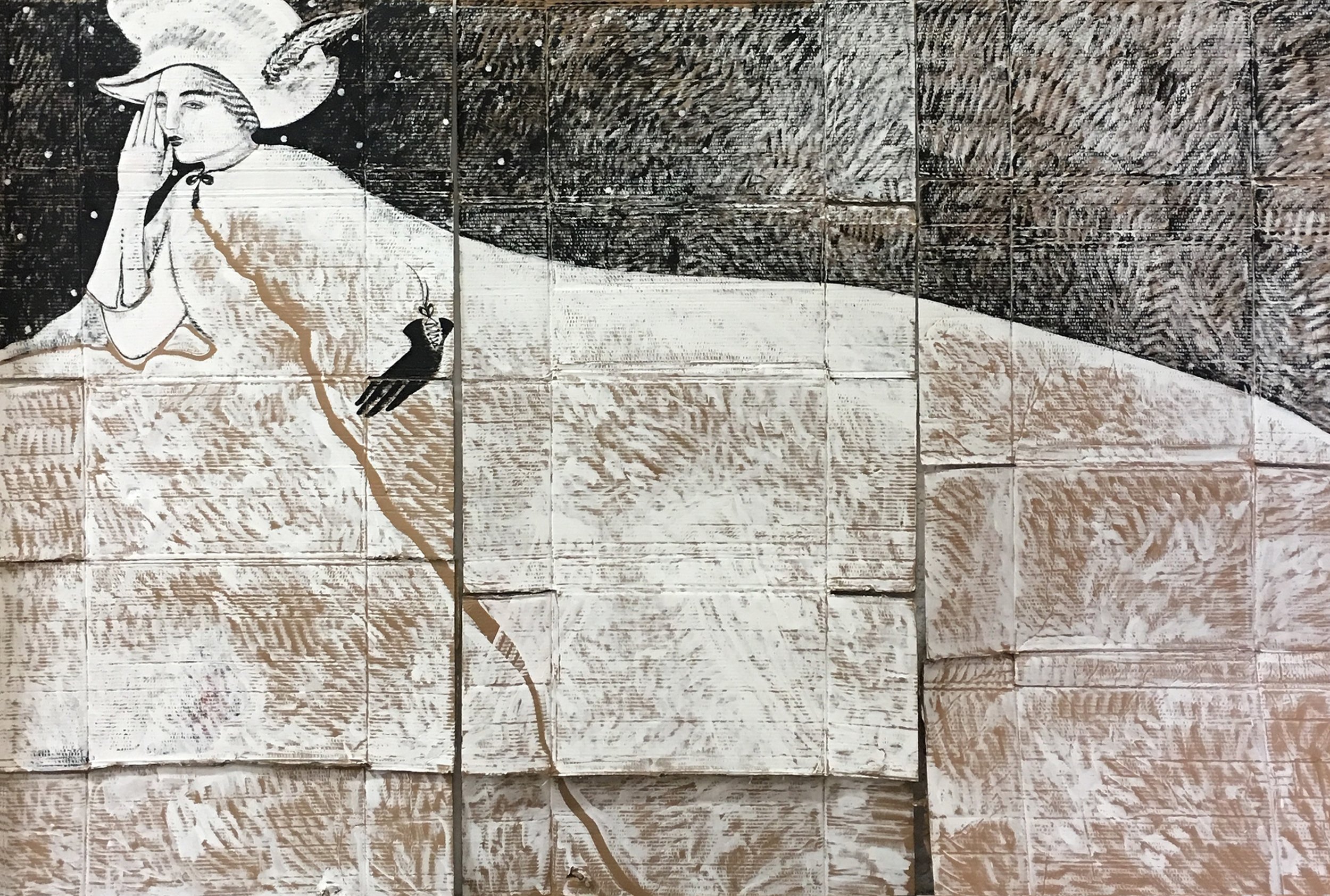
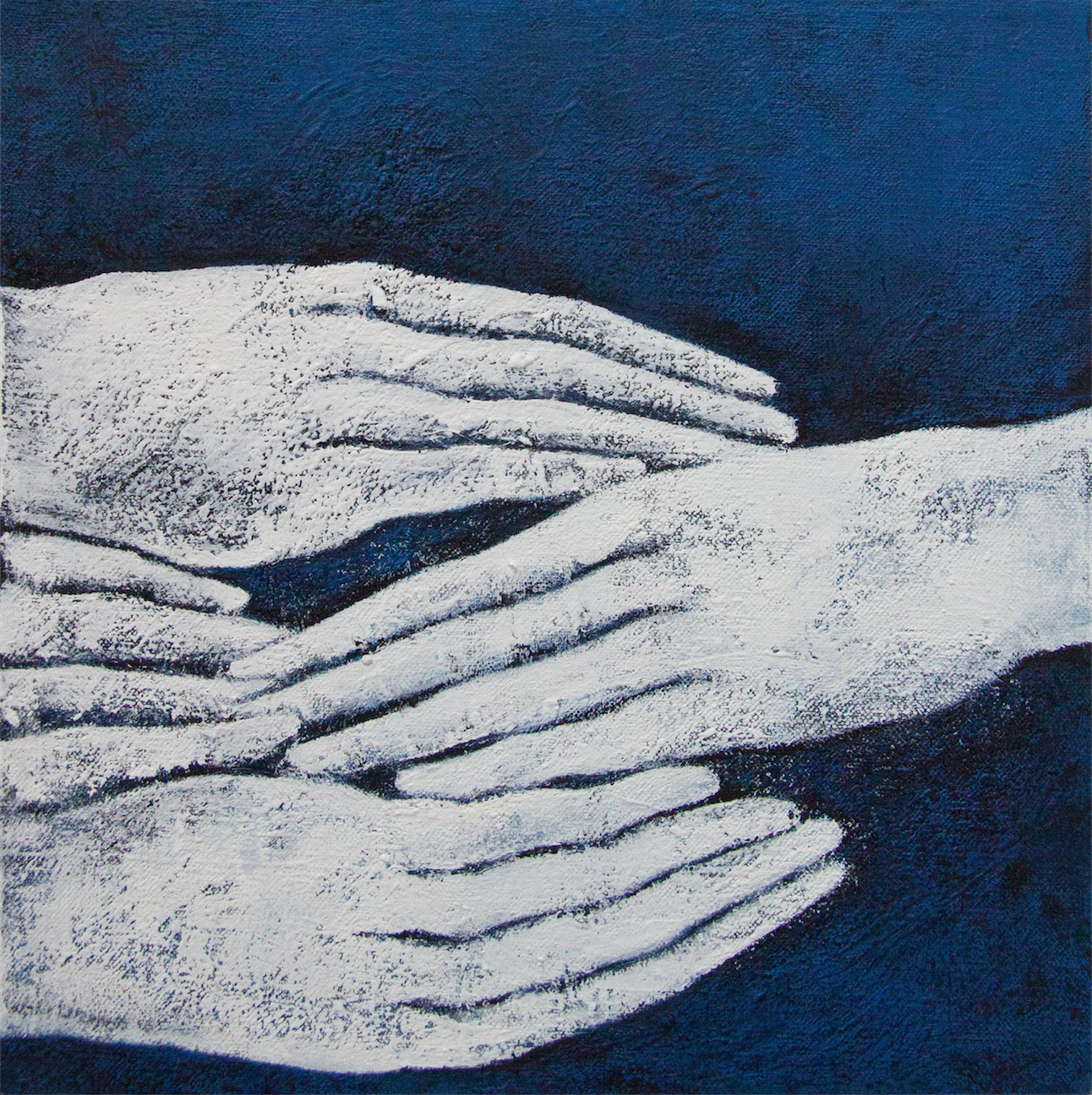
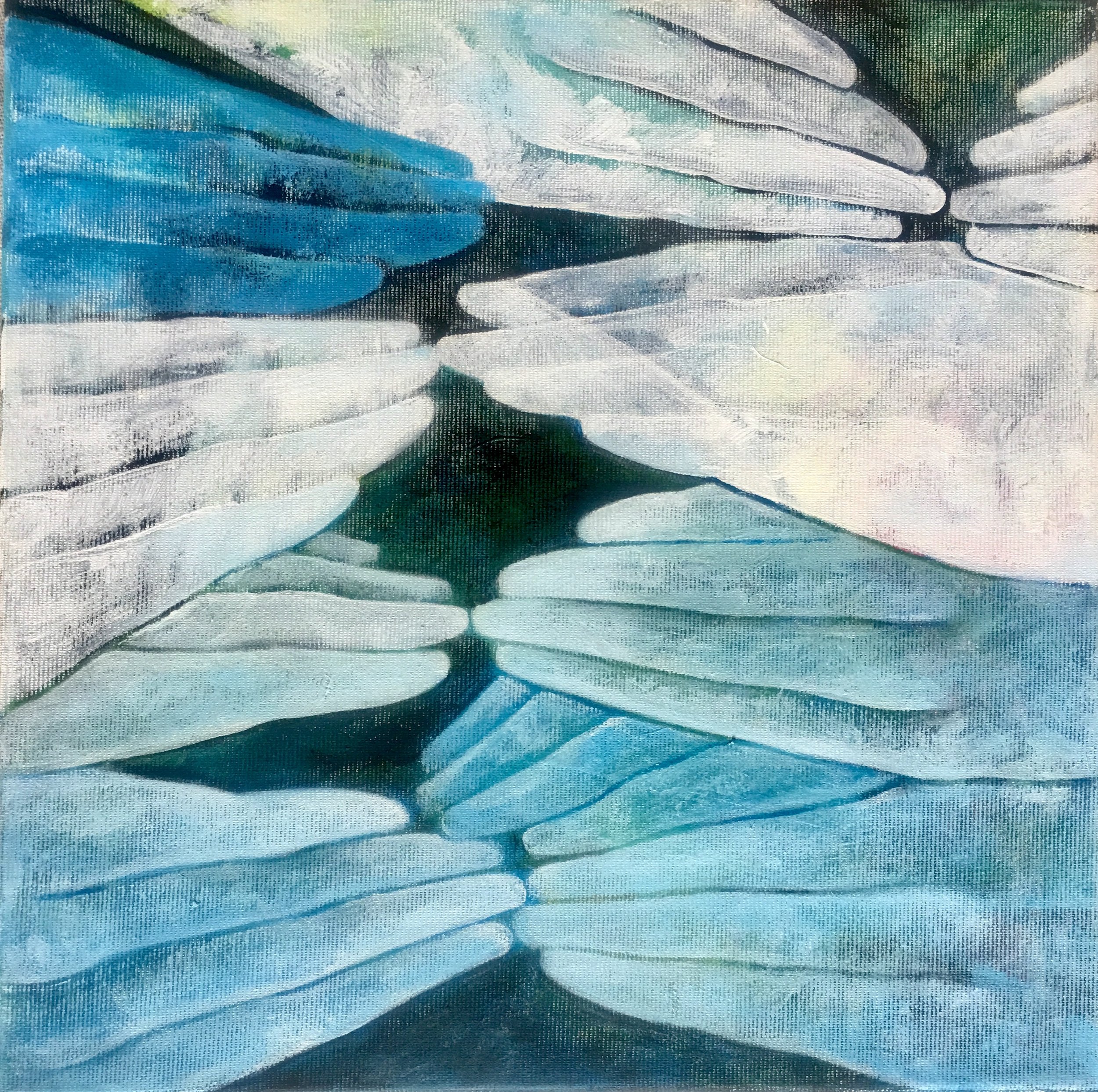
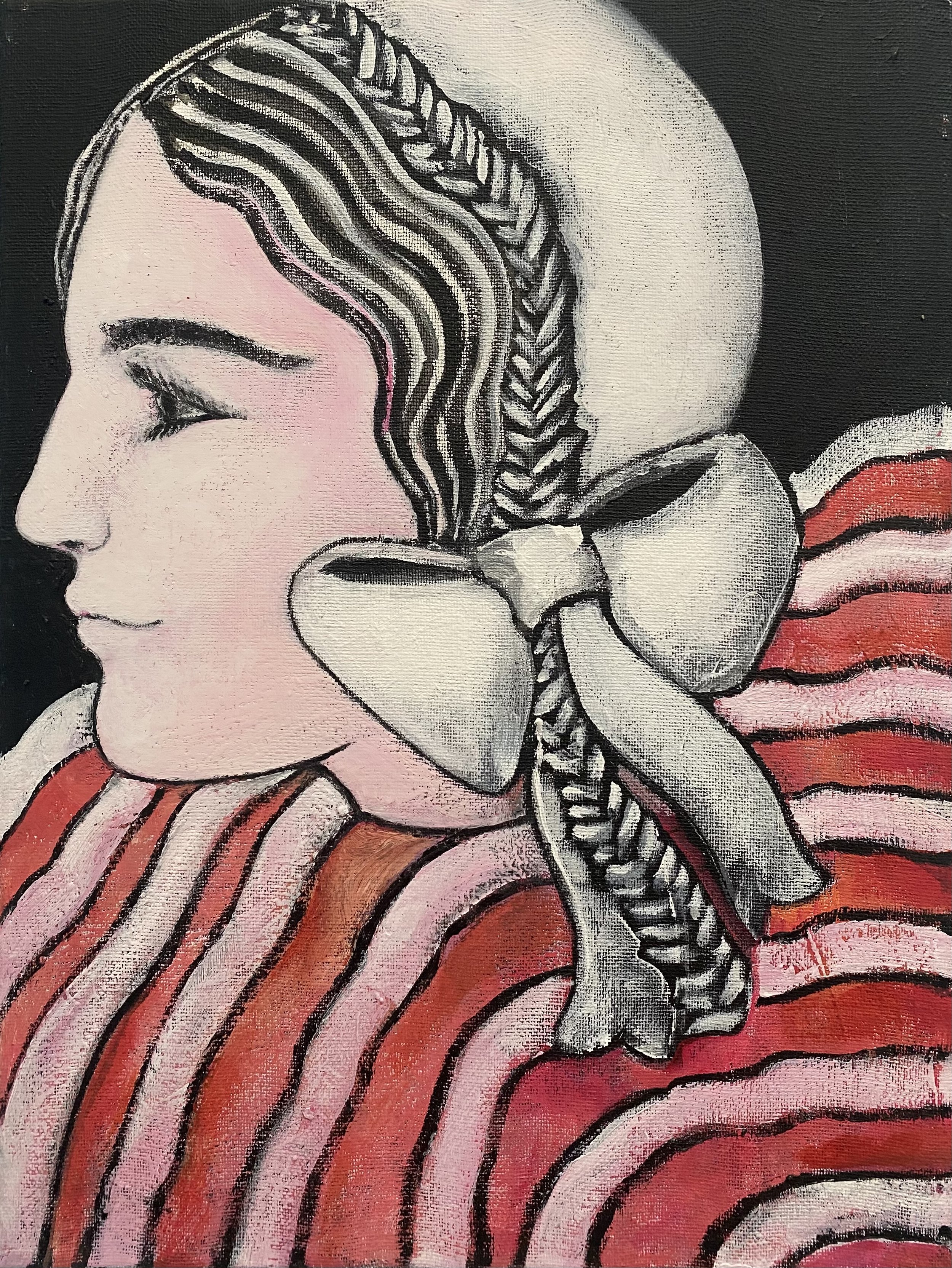
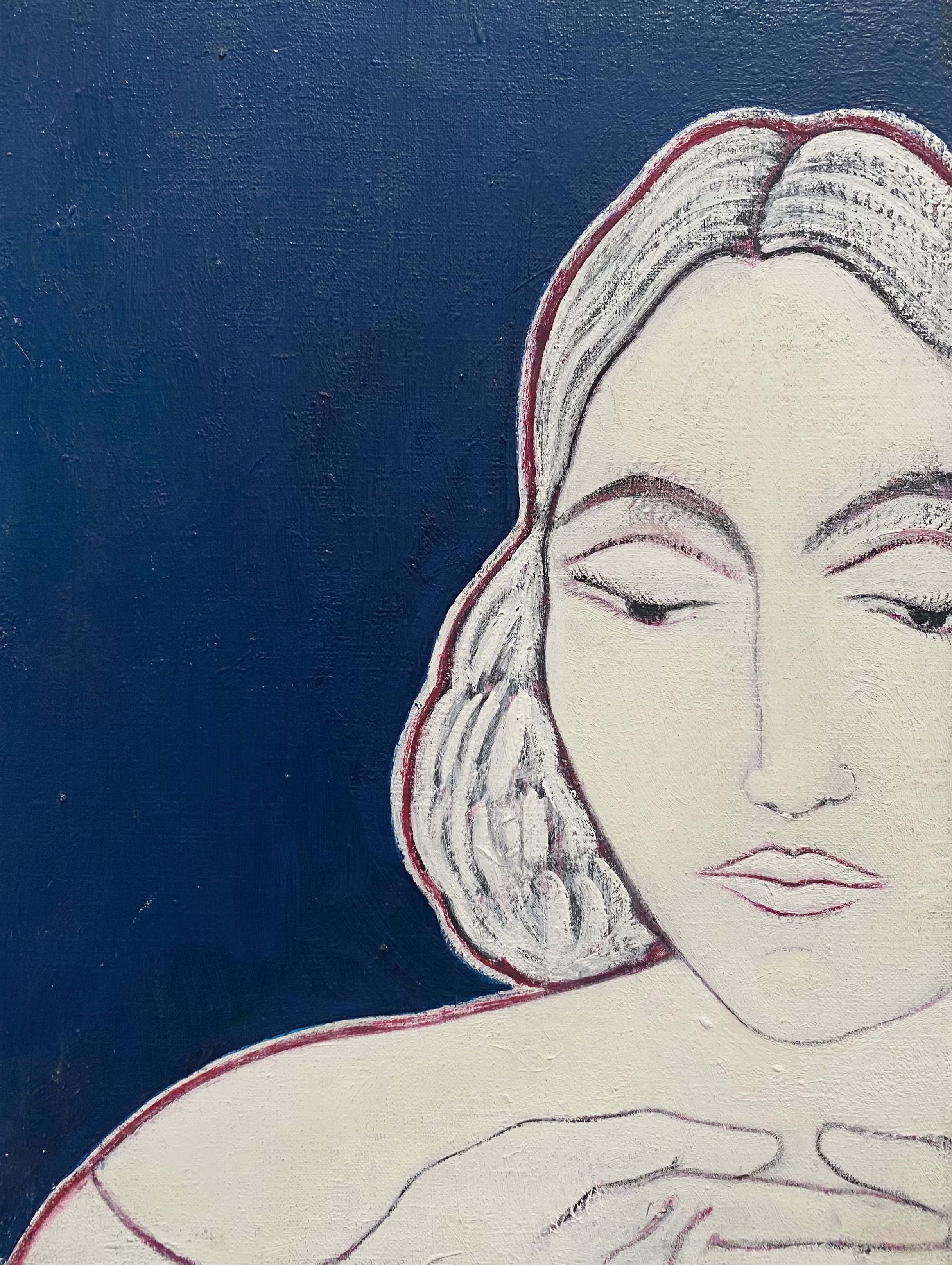
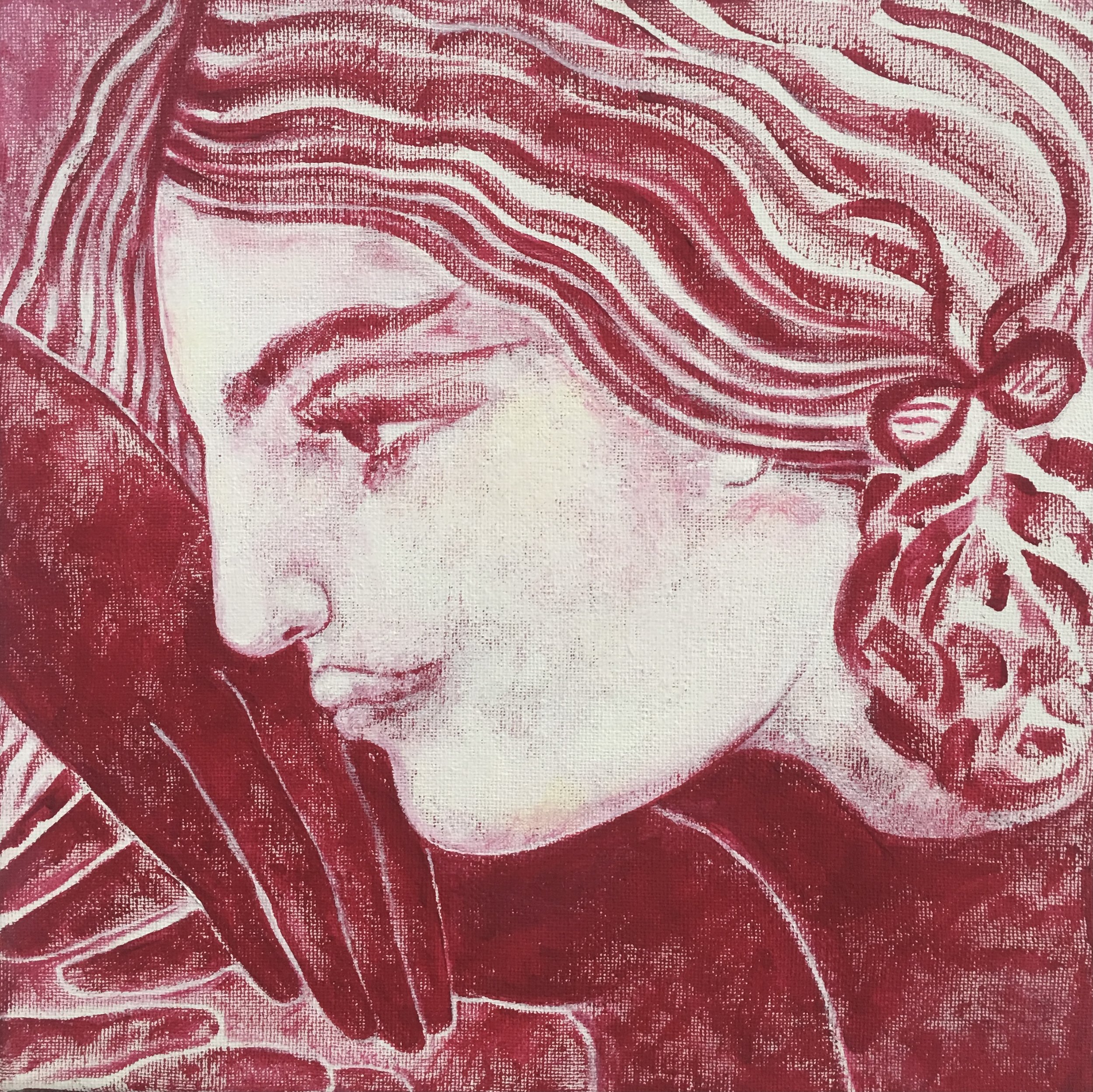
Sapar Contemporary is proud to present the first NYC gallery exhibition by Italian artist Sofia Cacciapaglia. Ranging from miniature paintings to monumental canvas and cardboard installations, Cacciapaglia’s works are a meditation on femininity and the emotional and spiritual co-existence of women. Her iconic larger-than-life works present women who are linked with each other through the rhythm of touching hands, dancing feet, falling hair, and secret glances. Eyes are portals into inner worlds — sometimes closed or blindfolded, other times open and full of mystery. One of Cacciapaglia’s favorite materials is discarded cardboard boxes which she transforms into supports for her paintings of women and gardens. This usage of old boxes and recycled packaging paper is tied to the artistic, historical, and social roots of Italian arte povera. In our modern age of ecological anxiety, the floral works speak directly not only to the cycles of women and seasons as a meditation on nature, but also the need for environmental renewal.
EMMA KATHLEEN HEPBURN FERRER AND SOFIA CACCIAPAGLIA IN CONVERSATION (excerpt)
EKHF: What did you admire about the Sicilian surroundings and culture whilst growing up? Were there specific historical or archaeological sites that spoke to you profoundly? What do you think of Sicilian history and art; from its sculptural traditions to its various mosaics, and Eastern icons therein?
SC: Sicily is part of my life experience. I have spent every summer of my life in Sicily, in my family home that faces the sea. It is a very strong land to which one remains inevitably bound and intimately enraptured. I feel my work is deeply "Italic" in its contrasting aspects of strength, joy, and melancholy. I find Sicily in this work; undoubtedly it has been greatly influenced by it. The mosaics of Piazza Armerina are of great inspiration to me with their closed, essential, and perfect forms recalling the classical world.
In my painting I bring together the things I love: all those beautiful things for which I have created a dependency, which over the years have become the basis of my pictorial research. The sea, femininity, the islands: "with their closed shapes that seem to have no weight on the horizon". The facades of the churches, white and candid like ice cream, sweets like ‘cassata’, so rich that they seem embroidered like the clothes in “The Leopard” by Giuseppe Tomasi di Lampedusa, an important Italian novel retracing the steps of the Italian “Risorgimento”, or unification of Italy at the end of the 19th century.
Sicily: the strong faces and nostalgic looks that I recognize in my paintings. The blinding and total light of midday, which moves the viewer. And the abandoned gardens, for Sicily is also called "the island of gardens". Sicily is where there are no rules, and everything is lush, messy, extremely full of life, and the flowers grow tall and free from boundaries.
EKHF: What is your physical process like; do you sketch or paint directly on the support?
SC: I never do sketches. The first thing that comes is always the best. It has a freshness to it that is unrepeatable.
EKHF: What is the importance of the materials you use? Is there a historical-sociological reference to a past movement?
SC:I work on linen with oil paints. Oil is a material that I love because it allows, through its continuous stratification of color, to give the work infinite richness and vibration. Works on canvas are almost always slow and long. I also paint on wrapping paper and discarded cardboard boxes, using acrylic which is more functional with these supports. I love these materials, which are poor materials - for me, they have an authentic beauty and a noble aspect, especially given the camel color of the paper and cardboard which I feel very truthful and kindred to me. The cardboard, with its internal structure, gives each brushstroke an extra poetic mark. Cardboard has always been used in the history of art, but in this particular historical moment I love making the floral works on the boxes that I find because they carry an environmental message with them, wherein a discarded material comes back to life, through painting, in the spring.
ABOUT ARTIST
Sofia Cacciapaglia was born in Ponte dell’Olio, Italy in 1983. She studied Fine Art at the Accademia di Belle Arti di Brera in Milano where she graduated in 2006. After graduating she moved to New York where in 2007 she had her first solo show at Industria SuperStudio, curated by photographer Fabrizio Ferri. Since then her work has been shown in galleries, foundations, museums in Italy, Switzerland, UK and China. In 2011 she was the youngest artist invited to the Italian Pavillon for the 54th International Art Exhibition La Biennale di Venezia. For the publication of the first monograph on her work, she completed “Locus Amoenus” in May 2019, her first large 360° installation that covered all the walls of her studio with discarded cardboard boxes, which she transformed into a blossoming garden from floor to ceiling. This work brings with it an environmental message, giving the salvaged material a second life through the representation of the rebirth of nature.
ABOUT CURATOR
Emma Kathleen Hepburn Ferrer is a visual artist and a curator based in Camaiore, Italy. Ferrer was born in Morges, Switzerland and grew up in Florence, Italy where she was exposed to Medieval and Renaissance iconography as well as artists who were active in Florence in later centuries. Ferrer’s curatorial practice is informed by her own personal history and intersect with her artistic practice, focusing on themes such as enigma, the human body, and spirituality. A rigorous dance discipline from a young age contributed to Ferrer's deep interest in the physicality of the human body, dress, and physical expression, which comes to the forefront of her personal and curatorial work. Perhaps it is not by chance that both exhibitions curated by Ferrer for Sapar Contemporary, “Ideas Get Dressed” in 2018 and Sofia Cacciapaglia’s solo exhibition in 2023 have been explorations of not just the female body itself, but of the costumes, messages, and panoplies which cloak, veil or adorn it.
EMMA KATHLEEN HEPBURN FERRER AND SOFIA CACCIAPAGLIA IN CONVERSATION
Complete Interview Text
EKHF: When did you realize that you would become a painter?
SC: It happened in a completely natural way. I feel like saying that you don't choose painting, you are chosen by it. It as if there was a great ‘magical’ component behind all of this. For me, painting has a true authentic dimension. It is full of enchantment.
The pictorial gesture is magic, rigorous, and serious. Painting means living at a slow pace, where time in the studio expands. Painting is an act of contemplation, of meditation before me and in front of the work. This way of working has its own ‘sacredness,’ which is very important to me. My practice goes in the opposite direction of speed, of consumption and devouring of today's world.
EKHF: What did you admire about the Sicilian surroundings and culture whilst growing up? Were there specific museums or archaeological sites that spoke to you profoundly? What do you think of Sicilian history and art; from its sculptural traditions to its various mosaics, and Eastern icons therein?
SC: Sicily is part of my life experience. I have spent every summer of my life in Sicily, in my family home that faces the sea. It is a very strong land to which one remains inevitably bound and intimately enraptured. I feel my work is deeply "Italic" in its contrasting aspects of strength, joy, and melancholy. I find Sicily in this work; undoubtedly it has been greatly influenced by it. The mosaics of Piazza Armerina are of great inspiration to me with their closed, essential, and perfect forms recalling the classical world.
In my painting I bring together the things I love: all those beautiful things for which I have created a dependency, which over the years have become the basis of my pictorial research. The sea, femininity, the islands: "with their closed shapes that seem to have no weight on the horizon". The facades of the churches, white and candid like ice cream, sweets like ‘cassata’, so rich that they seem embroidered like the clothes in “The Leopard” by Giuseppe Tomasi di Lampedusa, an important Italian novel retracing the steps of the Italian “Risorgimento”, or unification of Italy at the end of the 19th century.
Sicily: the strong faces and nostalgic looks that I recognize in my paintings. The blinding and total light of midday, which moves the viewer. And the abandoned gardens, for Sicily is also called "the island of gardens". Sicily is where there are no rules, and everything is lush, messy, extremely full of life, and the flowers grow tall and free from boundaries
EKHF: What is your physical process like; do you sketch or paint directly on the support?
SC: I never do sketches. The first thing that comes is always the best. It has a freshness to it that is unrepeatable.
EKHF: What is the meaning of scale in your works, and why are women and nature painted at this scale?
SC: I have always worked on a large scale, seeking lightness and sweetness in large dimensions. The works in this way have an immersive effect. Even the gardens I paint, like the figures, are large, yet light at the same time. I would like my works to convey a feeling of peace and strength at the same time.
EKHF: What is the importance of the materials you use? Is there a historical-sociological reference to a past movement?
SC:I work on linen with oil paints. Oil is a material that I love because it allows, through its continuous stratification of color, to give the work infinite richness and vibration. Works on canvas are almost always slow and long. I also paint on wrapping paper and discarded cardboard boxes, using acrylic which is more functional with these supports. I love these materials, which are poor materials - for me, they have an authentic beauty and a noble aspect, especially given the camel color of the paper and cardboard which I feel very truthful and kindred to me. The cardboard, with its internal structure, gives each brushstroke an extra poetic mark. Cardboard has always been used in the history of art, but in this particular historical moment I love making the floral works on the boxes that I find because they carry an environmental message with them, wherein a discarded material comes back to life, through painting, in the spring.
EKHF: Often in your works women are painted together. Why paint multiple female bodies together, who almost seem to coexist? For me the Beguines come to mind, communities of women who seemed to have disavowed society; who were not sure how to integrate into more socially acceptable circles and classes, so they decided to live together sharing worship and adoration. What does this say to you?
SC: There is a linear aspect in my works; the figures in my paintings are linked together as though in an embrace or in a chain of hands or feet. They are also linked by their gazes and their hair. They support each other through a balance wherein mystery is the leitmotif of composition.
EKHF: You treat and see women from the female point of view. Do you think this intensifies or modifies your consideration of the female body and experience?
SC: I am a woman, so my figures are treated from a female point of view, and it couldn’t be otherwise. The figures in my paintings do not belong to a time, to an era. They live suspended in time and emerge from the dream world. They are a symbol, a sign of the primordial woman, an archetype of the feminine.
EKHF: Tell me about the directionality of your compositions. Sometimes the women you depict are tumbling, dancing, or reposing.
SC: My figures are as if caught in a moment of transition on the canvas. This ‘passage’ always contains a rhythm that changes according to the horizontality or verticality of the lines. The vertical line is active, while the horizontal line is relaxed. Horizontal women give me a feeling of calm and suspension while vertical ones have a more dynamic rhythm.
EKHF: Let’s talk about your use of color. You usually work in monochrome or two-tone to create vast compositions. How do you choose a focal color, and what does that color accomplish in a painting? What do you decide first; color or subject, and how are the two related?
SC: In the oil paintings I use a lot of color and a lot of physical paint, especially in the initial part of the work, and at this stage the color is diluted very little. I paint through an inverse procedure, in which as the work progresses, the underlying colors are canceled to arrive to a total, almost monochrome color. This way of painting gives the work a presence, a solid body that is formed by all these stratifications of color which, even if erased, illuminate the picture with its own light that comes from within.For example, when this happens with a work that appears white, that white contains within it infinite colors that form the work. It is different in an acrylic painting on paper, which is always a faster and freer process, a more gestural way of proceeding.
EKHF: Frequently your women are painted with their eyes closed or veiled. Sometimes the women are even blindfolded, but with their eyes open. What does this mean?
SC: Veils, blindfolds, and closed eyes are often present in my work. Closed or covered eyes represent the shell of the soul and hold even more importance: they hide a mystery; an enigma that has no explanation.
EKHF: Sometimes there is a sense of simplicity, longing or loneliness in your works. Other times there is almost a propensity for excess, for burlesque – the festive, the rich. The Venetian Carnival comes to mind, and its uninhibited celebration. How can these two almost opposite ways of existing and feeling live side by side?
SC: When I put myself in front of a new piece, I let the mood of the present moment flow freely. The different, even opposite characters of the works you are talking about are different aspects of living that traverse through me every day and opposite qualitites within all of us that we observe continuously. It's up to us to remain observers of ourselves in the complexity of living.

